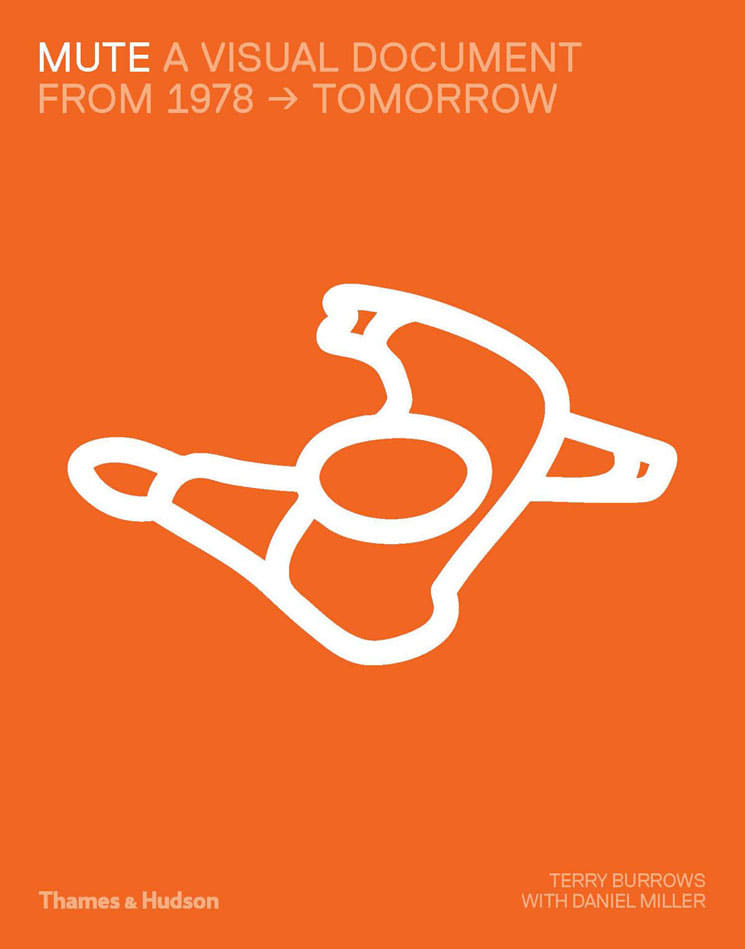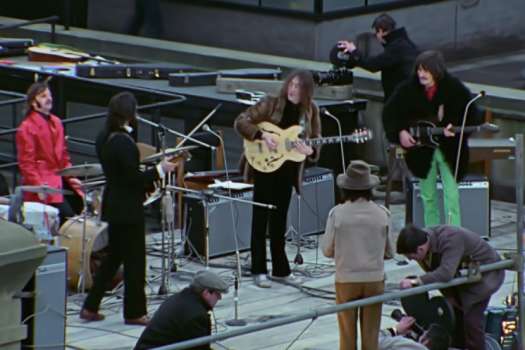From reading Mute label founder Daniel Miller's introduction alone, one can see the need for this book. He doesn't even dive into the label's full roster at this point, but the few names that he does mention immediately make you realize the sheer scope of Mute throughout the years. Releasing Depeche Mode's first album is obviously a talking point, but names like Sonic Youth, Dinosaur Jr., Richie Hawtin, Speedy J and Can are dropped like they're bit characters, which goes to show just how extensive the label really is. Not to mention that it really does egg you on to the rest of the book, as any good intro should.
From there the reader is taken through a number of eras: 1978-1979, 1980-1982, 1983-1989, 1990-1999, and 2000 →→, where it looks at Mute's foray into synthesizers and festivals. There's a lot of history here, but it's not a chronological list of achievements. Granted, this is a retrospective look at Mute throughout the years, but it also shines a light on how electronic music, and particularly being able to record at home, picked up the baton after the punk scene began to slow down in the early '80s.
For many, the introduction of affordable synthesizers to the market let someone without a technical musical background have a crack at being a musician, something punk too had embraced. As Miller himself states, "I saw electronic music as being more punk than punk: you didn't have to learn any chords, just press down on the keyboard and an interesting sound would come out."
From the early days of Depeche Mode's slow rise in fame, to later releases from Moby and Goldfrapp, Mute has gone through as many trials and tribulations as you'd expect from an independent label battling with the big boys. Mute: A Visual Document From 1978 → Tomorrow does an excellent job of telling this story, with some great insights from its artists and Miller himself. At the end of the day though, this is a visual document and the artwork, from mere sketches to the finished product, are a marvel. You really get an insight into the creative process behind the look of a record and how it relates to the music.
Although Mute has never insisted on a consistent style for their artwork, the one thing they have in common is total freedom of expression for the creative process. The bulk of Mute's artwork boils down to picking a talented artist and letting them get a sense of the music, and occasionally — as is the case with Goldfrapp's Silver Eye album and the poster for Mark Stewart's As the Veneer of Democracy Starts to Fade — letting the musicians themselves take full creative control. Each picture of an album cover and inside sleeve comes with a footnote explaining the concept behind it. This provides a slew of interesting tidbits, like how the Birthday Party's Mutiny! featured a swastika on the cover, so each copy sent to Germany had to be individually blacked out with a felt pen, or how the cover for Play by Moby came about from renting a room at Chelsea Hotel for no particular reason and repeatedly jumping up and down on the bed.
While album art is obviously a huge part of the book, it's also littered with photos of the label's musicians throughout the years. It could be the black-and-white film or maybe just the era itself, but everyone from Mute's early years just looks cool as fuck. People like Frank Tovey (aka Fad Gadget) and the impossibly photogenic Nick Cave seem to be brazen and brooding in every pic, but like they also have something very important to say too, which of course they did.
Even though the musicians on Mute and its sub-labels are incredibly diverse, they still seem to cross over in some way or another. Mute: A Visual Document From 1978 → Tomorrow highlights this fact by displaying a neat two-page table that shows the connections between its artists. Here, you can connect the Normal to Non via Frank Tovey and Boyd Rice or Depeche Mode to Diamanda Galás through Erasure. It's just another clever nugget in a book that's very nugget-heavy.
Ultimately though, what makes this retrospective a success is the fact that it makes you want to explore or re-listen to every record mentioned. Flicking around Youtube with this chunky hardback balanced on one knee has proven to be a bit of a nightmare, so now that the book is completed, we're off to listen to Mute's entire back catalogue. I guess we'll have to give the industrial, avant-garde stylings of Laibach some time sink in, but it's never a bad idea to replay Arca's Xen and Consumed by Plastikman every once in while, so thanks for the reminder, Mute.
(Thames & Hudson)From there the reader is taken through a number of eras: 1978-1979, 1980-1982, 1983-1989, 1990-1999, and 2000 →→, where it looks at Mute's foray into synthesizers and festivals. There's a lot of history here, but it's not a chronological list of achievements. Granted, this is a retrospective look at Mute throughout the years, but it also shines a light on how electronic music, and particularly being able to record at home, picked up the baton after the punk scene began to slow down in the early '80s.
For many, the introduction of affordable synthesizers to the market let someone without a technical musical background have a crack at being a musician, something punk too had embraced. As Miller himself states, "I saw electronic music as being more punk than punk: you didn't have to learn any chords, just press down on the keyboard and an interesting sound would come out."
From the early days of Depeche Mode's slow rise in fame, to later releases from Moby and Goldfrapp, Mute has gone through as many trials and tribulations as you'd expect from an independent label battling with the big boys. Mute: A Visual Document From 1978 → Tomorrow does an excellent job of telling this story, with some great insights from its artists and Miller himself. At the end of the day though, this is a visual document and the artwork, from mere sketches to the finished product, are a marvel. You really get an insight into the creative process behind the look of a record and how it relates to the music.
Although Mute has never insisted on a consistent style for their artwork, the one thing they have in common is total freedom of expression for the creative process. The bulk of Mute's artwork boils down to picking a talented artist and letting them get a sense of the music, and occasionally — as is the case with Goldfrapp's Silver Eye album and the poster for Mark Stewart's As the Veneer of Democracy Starts to Fade — letting the musicians themselves take full creative control. Each picture of an album cover and inside sleeve comes with a footnote explaining the concept behind it. This provides a slew of interesting tidbits, like how the Birthday Party's Mutiny! featured a swastika on the cover, so each copy sent to Germany had to be individually blacked out with a felt pen, or how the cover for Play by Moby came about from renting a room at Chelsea Hotel for no particular reason and repeatedly jumping up and down on the bed.
While album art is obviously a huge part of the book, it's also littered with photos of the label's musicians throughout the years. It could be the black-and-white film or maybe just the era itself, but everyone from Mute's early years just looks cool as fuck. People like Frank Tovey (aka Fad Gadget) and the impossibly photogenic Nick Cave seem to be brazen and brooding in every pic, but like they also have something very important to say too, which of course they did.
Even though the musicians on Mute and its sub-labels are incredibly diverse, they still seem to cross over in some way or another. Mute: A Visual Document From 1978 → Tomorrow highlights this fact by displaying a neat two-page table that shows the connections between its artists. Here, you can connect the Normal to Non via Frank Tovey and Boyd Rice or Depeche Mode to Diamanda Galás through Erasure. It's just another clever nugget in a book that's very nugget-heavy.
Ultimately though, what makes this retrospective a success is the fact that it makes you want to explore or re-listen to every record mentioned. Flicking around Youtube with this chunky hardback balanced on one knee has proven to be a bit of a nightmare, so now that the book is completed, we're off to listen to Mute's entire back catalogue. I guess we'll have to give the industrial, avant-garde stylings of Laibach some time sink in, but it's never a bad idea to replay Arca's Xen and Consumed by Plastikman every once in while, so thanks for the reminder, Mute.




